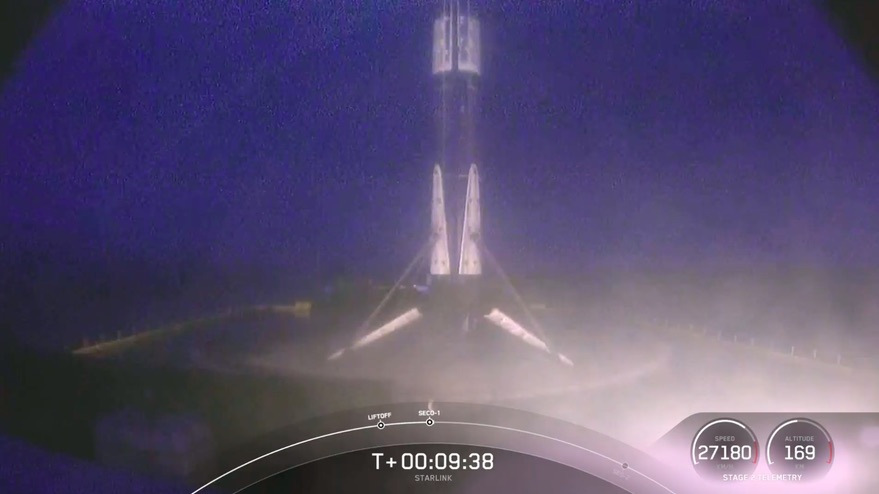Products You May Like
WASHINGTON — A Falcon 9 launched another set of Starlink satellites March 14, with the rocket’s first stage setting a record with its ninth launch and landing.
The Falcon 9 lifted off from Launch Complex 39A at the Kennedy Space Center at 6:01 a.m. Eastern. The upper stage deployed its payload of 60 Starlink satellites into orbit 65 minutes later, bringing the size of the broadband internet constellation to 1,260 satellites.
The launch was the eighth for the Falcon 9 this year, and took place a little more than 72 hours after another Falcon 9 launch of Starlink satellites. Six of the eight Falcon 9 launches this year have been dedicated to Starlink, and one of the other two, the Transporter-1 dedicated rideshare flight, also carried 10 Starlink satellites.
The rocket’s first stage landed on a droneship in the Atlantic Ocean eight and a half minutes after liftoff. That booster was on its ninth flight, a record for the Falcon 9. The rocket, which first launched a Crew Dragon spacecraft on the uncrewed Demo-1 mission in March 2019, later launched the Radarsat Constellation Mission and the SXM-7 satellite for SiriusXM. It launched five Starlink missions before this one, including the booster’s previous flight Jan. 20.
The booster is now approaching the goal SpaceX set of being able to fly 10 times. However, one company official recently said it may be possible to exceed that goal.
“We’re learning a lot about refurbishment and we’re learning where the areas are where we need to pay attention to,” said Hans Koenigsmann, senior adviser for build and flight reliability at SpaceX, during a panel discussion at the 47th Spaceport Summit last month. Those areas that require special attention include the booster’s heat shield and engine components. “We’ve been learning with every single landing.”
Some of those lessons have been hard ones. One booster failed to land after a Feb. 15 launch, breaking a streak of successful landings lasting nearly a year. The company later said an engine shut down during flight when hot gas got through a hole in an engine cover that was a “life leader” in the Falcon 9 fleet, with more launches than any others in the Falcon 9 fleet. The shutdown meant the booster did not have enough thrust for a landing on a droneship.
“The more you fly, the more you learn,” Benji Reed, senior director for human spaceflight programs at SpaceX, said of the failed landing at a March 1 briefing about the upcoming NASA Crew-2 commercial crew mission. “That’s a great lesson that we learned from these very long life leader components and vehicles.” Those lessons, he said, included revised plans to inspect and replace components
Once a booster reaches the milestone of 10 flights, “we will continue to look at that booster and make an assessment whether we can move forward with it,” Koenigsmann said. He suggested the booster may be able to continue to operate, perhaps after replacing some components that wear out. “I don’t think the number 10 is a magic number.”
